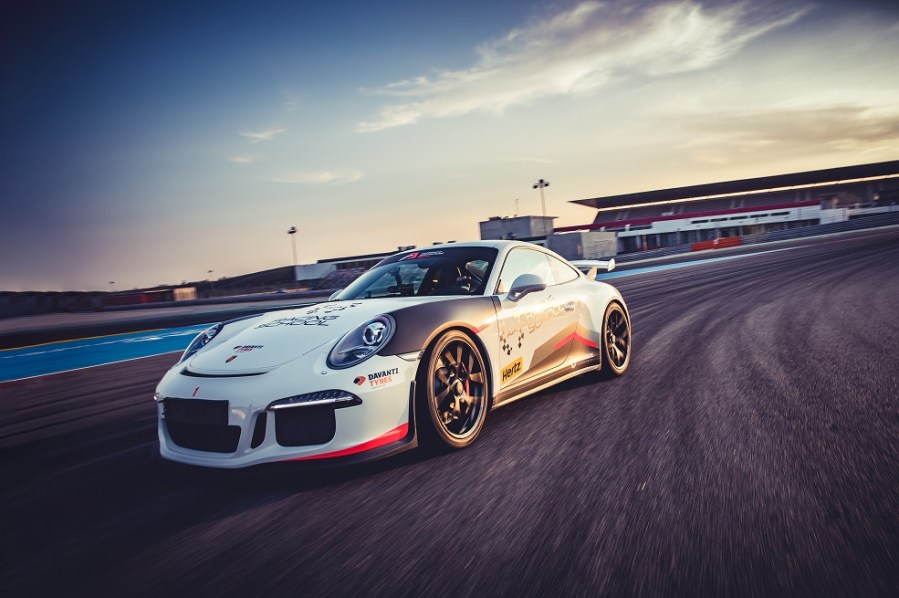To pick the right tyres for your performance car, it’s useful to understand the technology behind tyres, how they work and what those numbers mean. Our guide talks about all this, as well as how they’re made, the different types of rubber compounds, winter tyres and more.
Never underestimate the importance of good quality tyres for your car. The rubber you choose will affect the acceleration, braking and cornering performance of your car, so you need to choose wisely. There’s no point increasing your car’s power output, improving the suspension setup, or beefing up the brakes if all that work is going to be undermined by the tyres you’ve fitted. As the only part of the car in contact with the road, your tyres have a direct impact on all areas of its performance, so you need to give them some serious thought and consideration. That’s why we’re going to talk all about tyres to show you what you should be looking out for when purchasing your next set.
How are car tyres made?
To understand what makes car tyres do what they do, let’s go back to basics and look at how one is put together. Almost all radial road car tyres are largely constructed the same way, with the major differences being the exact compounds of rubbers used, the internal construction and the final tread pattern design.
Today, this process is largely automated to maintain a consistently high quality of tyre production. For example, Davanti Tyres’ most advanced UHP offering – Protoura Sport – is manufactured in a state-of-the-art Industry 4.0 facility. This cutting-edge plant ensures every tyre meets the highest manufacturing standards using automation.
The basic process of building a tyre however remains unchanged, starting with the steel beads. These are then encapsulated in rubber and form the tyre bead as we know it and provide the starting point for the rest of the tyre to be built upon. The next step is the tyre liner, which is a non-porous, fibre-reinforced rubber used to form the basic shape of the tyre. This creates an airtight seal between the steel beads so the tyres can be inflated – hence needing to be made from a non-porous material to prevent moisture in the air escaping and thus deflating the tyre.
On top of the liner the tyre body plies are added. These are made from fibre-reinforced rubber and help give the tyre its shape. The number of body plies depends on the application of the tyre, but typical road car tyres will feature two or three of these plies – typically polyester.
Next come the steel belts. These are steel reinforced sheets of rubber that are added to give the tyre strength and durability. The number and type of steel belts used will help determine the finished tyre’s load and speed ratings. Again, the number of steel belts used depends on the application, but typically you will find two or three layers in most road tyres.
The blend of plies and steel belts is then capped off with a final layer of nylon-reinforced rubber, before the tread cap is applied. The tread cap is the final, thicker layer of rubber that eventually forms the tread pattern of the finished tyre. The compounds of the rubbers used in the tread cap will alter depending on the intended purpose and the manufacturer’s specifications.
At this stage the tyre is still ‘green’, and the layers of soft, sticky, pliable rubber need to be cured before they can be used on the road. The curing process involves applying both heat and pressure to the tyres in a specific tyre curing press. This causes all the layers to bind together to create what is effectively a rubber laminate and cures and hardens the rubber to give the desired characteristics. The curing press also indents the tread pattern design into the outer tread cap layer, as well as all the required sidewall markings and tyre information.
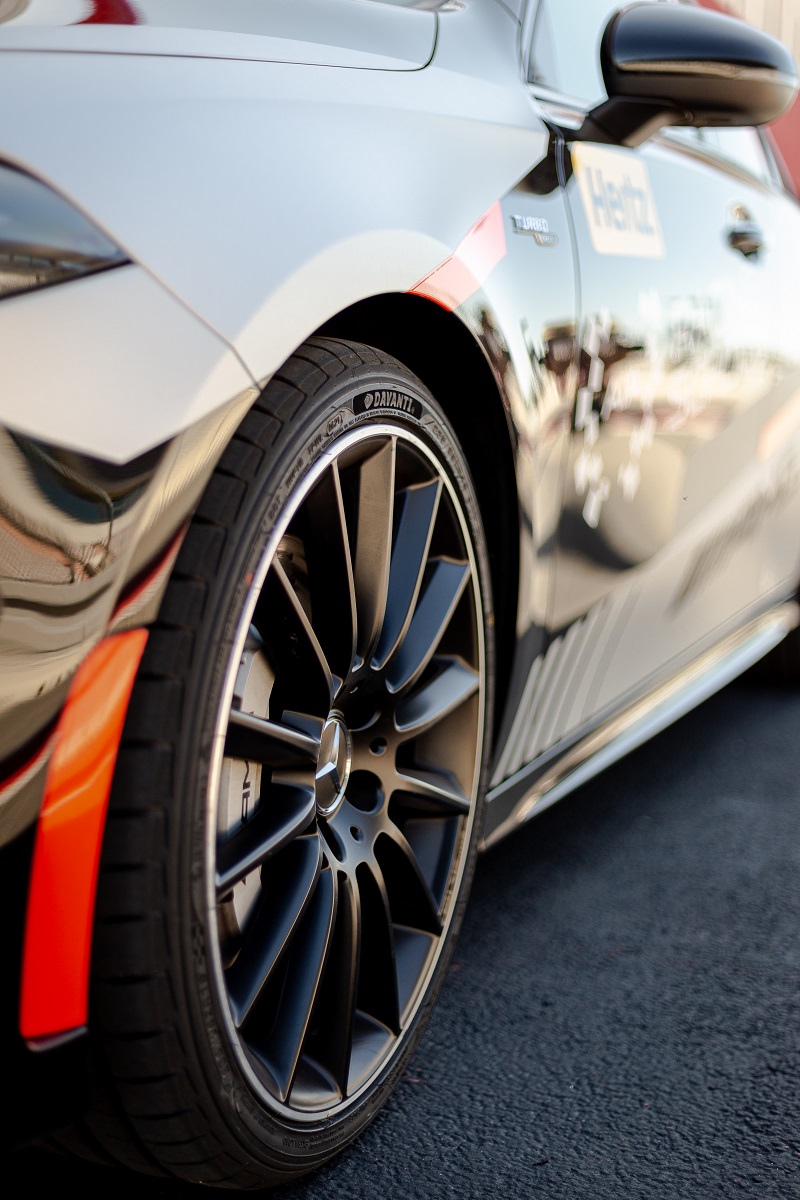
Rubber compounds
The specific compounds used for different tyres will vary dramatically. Tyre manufacturers invest fortunes in developing different tyre compounds in order to meet specific criteria, and as such the exact ‘recipe’ for each compound is always a closely guarded secret. There are hundreds, if not thousands, of different tyre compounds in production.
Typical road car tyres will contain several different rubber compounds, some natural and some synthetic, each designed to do a specific job. Some will help keep the air within the tyre, others will allow the sidewall to flex, and others will help bind the nylons and steel belts together.
The compound most people refer to is the tread compound, as this is the part of the tyre in contact with the road and therefore has the greatest effect on a tyre’s performance. The tread compound itself is also made of various elements, including complicated polymers and often a certain amount of silica. These help a tyre’s resistance to abrasion, tears, or cuts, and prevent the tyre from losing its integrity and going very soft.
However, the tread compound consists of three main ingredients: natural and synthetic rubbers, carbons, and oils. As a rule, the greater the rubber content, the more grip the tyre will offer. But this comes at the expense of longevity, as softer, grippier tyres wear faster than harder compounds containing more carbons.
One real-world example is Protoura Sport, which is built from an enriched rubber compound, featuring an advanced silica mix to offer greater grip and endurance at high speeds.
When you hear people talking about ‘hardness’ and ‘softness’ of tyres they are not referring to how hard the tyre is to the touch, but instead are talking about how rubber molecules in the tyre interact with the road.
The rubber used in car tyres goes through a process called vulcanising. This is a process that converts rubbers and polymers into a more durable material by adding elements such as sulphur. The addition of sulphur creates crosslinks between the polymer chains and rubber molecules, which has the effect of making the material less sticky but more durable.
One of the main differences between harder and softer compounds is due to how the addition of sulphur affects the rubber molecules. In a softer compound (which features a greater percentage of rubber) the crosslinks caused by the vulcanisation process are fewer in number. This means the rubber molecules and polymer chains are longer between crosslinks than in a harder compound. The longer the rubber molecules are, the more they can interact with the road surface, therefore giving grip. In a harder tyre compound the rubber molecules are more restricted and are unable to interact with the road surface as much, therefore giving less grip.
However, softer car tyres will wear more quickly than a harder tyre. It is the movement of the rubber molecules and the friction they generate that provide the grip we crave, but at the same time this friction causes the tyre to wear. So, you need to choose a compromise between the levels of grip you want and the amount of time you want them for.
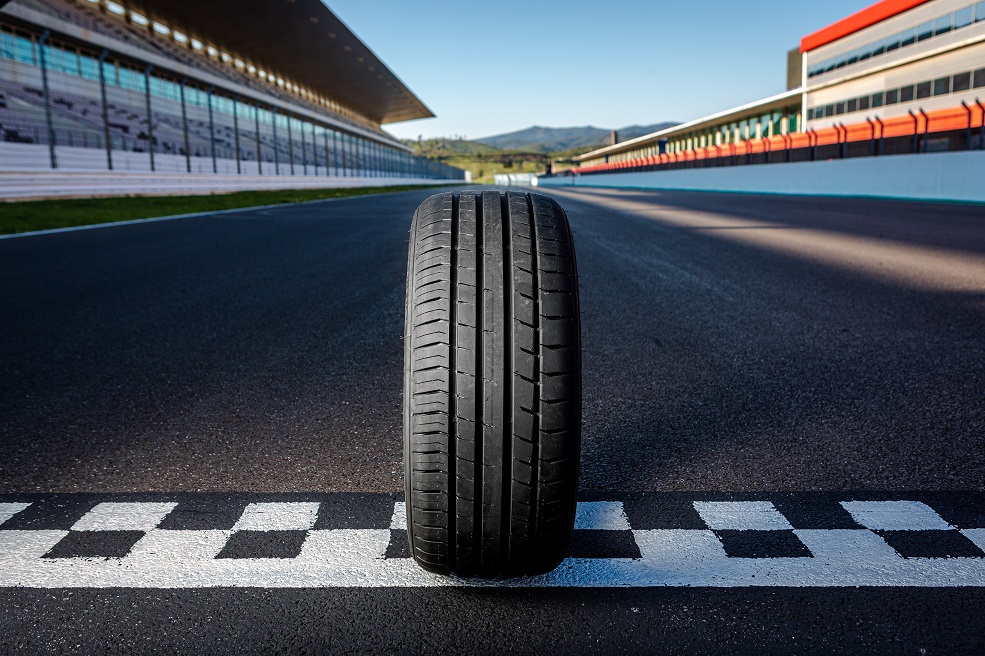
Car tyres: tread pattern designs
Aside from the compounds used, the second biggest difference in tyre design is the tread pattern. There are thousands of tread pattern designs already available, and as tyre research and development continues manufacturers are constantly producing new styles.
Arguably on smooth dry roads, slick tyres will offer the best performance because all the tread area is in contact with the road. However, our roads are seldom totally dry, therefore the tread pattern needs to have the ability to clear water from under the tyre in wet conditions whilst still retaining as much dry performance as possible.
A leading UHP tyre like Protoura Sport will often include additional unique innovations to enhance performance. For example, Protoura Sport incorporates tiny hydrodynamic dimples, which disrupt water flow closest to the tyre surface to reduce drag and channel water away from the contact area more efficiently.
Trapezoid projections within the tyre groove create low-pressure zones to further aid water flow away from the contact area while braking is optimised by ribbed and serrated block edges.
These innovations are designed to generate improved grip, handling, and performance for high-powered vehicles in both wet and dry conditions.
Outside of tread innovation, different tread pattern designs available for road tyres can be easily split into three main categories: symmetrical, asymmetrical, and directional.
What are the different tread patterns on car tyres and what do they mean?
Symmetrical tread patterns
Starting with the simplest, a symmetrical design is exactly as it says and features the same pattern across the width of the tyre. This means the same tyre can be fitted either way to any of the four wheels.
Asymmetrical tread patterns
An asymmetrical tread pattern differs across the width of the tyre, meaning the design has an inside and an outside edge and needs to be fitted accordingly. Asymmetrical tread patterns offer a couple of advantages over symmetrical designs. Firstly, the outer edge and shoulder area of the tyre usually features larger, stiffer tread blocks to help with cornering stability. This is because the outer edge of the tyre is subjected to higher loads than the inside when cornering hard. Asymmetrical patterns also tend to have an inner edge that features more tightly packed, aggressive grooves. This helps with water dispersion and gives better performance and grip in wet conditions. Finally, asymmetrical designs can also feature a wide continuous centre rib, which aids high-speed straight-line stability too.
Directional tread patterns
Directional tread patterns differ again from both symmetrical and asymmetrical designs. They are symmetrical across the width of the tyre (meaning they have no specific inside or outside edge) but have a design that only works in one direction of rotation (hence the name). This means the tyres can only be fitted to a pair of wheels (either left or right-handed) and need to be turned around before fitting to the opposite pair.
Directional tyres offer different performance advantages to asymmetrical patterns. Directional tread patterns have mostly been superseded by asymmetrical patterns for normal road use. While directional patterns can provide greater levels of traction, asymmetrical tyres have been found to be quieter, more efficient and offer better aquaplaning resistance in most cases.
Shoulder blocks
While talking about tread pattern designs it’s also worth noting the shoulder block area of the tyre. This is the area between the tread pattern and the sidewall and takes the brunt of the car’s lateral forces during cornering. As a result, these tend to be chunky in their design, to maximise the contact patch with the road as the tyre moves around under heavy cornering forces. The grooves between the shoulder blocks are known as sipes, and their job is to help keep the tyre cool (as well as helping to disperse water in wet conditions). The position of these sipes determines the size of the shoulder blocks, and these are deliberately spaced to ensure the shoulder blocks are not uniformly sized. Instead, the size of the shoulder blocks differs all the way around the circumference of the tyre, as this alters the harmonics of the tyre and can reduce road noise. If the shoulder blocks were all the same size the tyre would produce an irritating hum when driving at a steady speed.
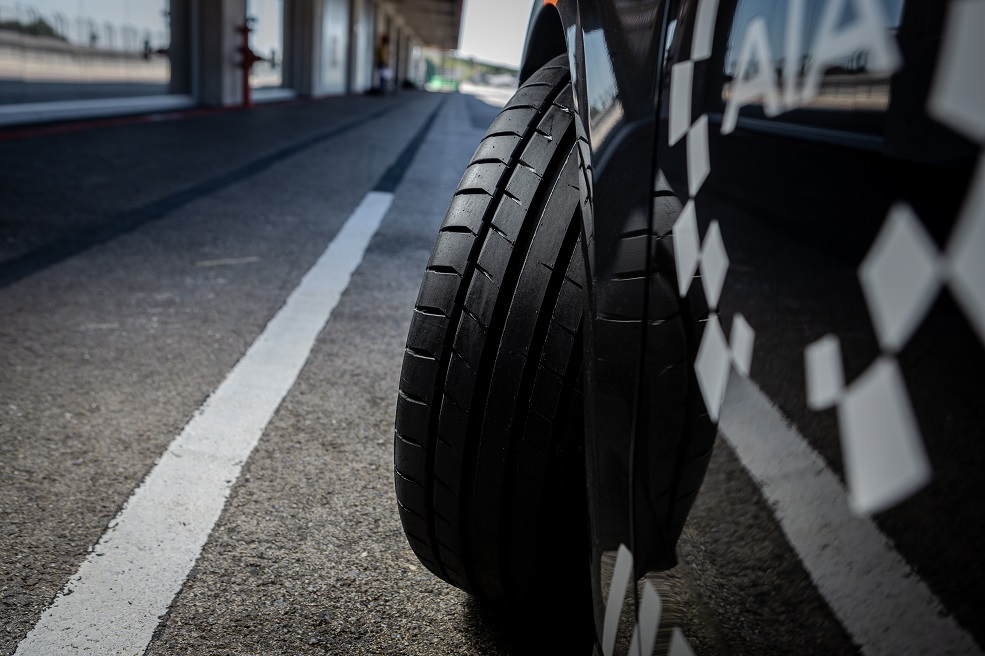
Car tyres: EU Labelling
Since late 2012 all new tyres must conform to an EU-approved labelling system. This info is displayed using the same easy-to-understand standardised labelling system as used for white goods, where the tyres are graded on wet weather performance, fuel efficiency, and road noise. EU labelling was updated in 2021 to give drivers more insight. This does make it easy to compare tyres on a like-for-like basis, but there are a few things to consider:
Fuel Efficiency
It’s labelled as fuel efficiency to sound catchy for general motorists and is part of the EU’s drive towards lowering vehicle emissions, but what the tyre is tested for is its rolling resistance. This is the amount of energy it takes to keep the tyre rolling. Yes, a higher rolling resistance will cause the car to burn more fuel, but that’s not necessarily a bad thing in terms of performance as it often means the tyre has more grip!
The 2021 changes amended fuel efficiency ratings into five different categories, ranging from A-E, with A being the best performer and E being the worst performer.
Wet Weather Performance
The wet weather label is probably the most important one for everyday motorists to look at, showing the tyre’s performance in wet and slippery conditions. The test involves driving a car along a wet road at 50mph and measuring the braking distance to come to a complete stop. The difference between each rating is around 3m stopping distance, meaning that there’s potentially a huge 18m difference between the best A grade and worst E grade tyres!
Noise Levels
All tyres are now tested for noise levels and marked accordingly. The label shows this as a decibel figure indicating how loud the tyre is. But there’s a second bit of information to be found in the number of sound bars next to the dB figure, an A-C rating. Previously this was a black soundwave bar, with one black bar (two empty) showing the tyre meets current legislation; two black bars (one empty) show the tyre meets future noise limits; and three black bars means the tyre is at least 3dB under the future noise limits. Under the new labelling three bars is now A down to one bar which is C.
Winter Performance
The biggest change to labelling this year was the introduction of two winter ratings – Ice Grip and 3-Peak Mountain Snowflake.
The Ice Grip pictogram indicates that the tyre is fully compliant with an internationally recognised minimum ice grip index.
The 3PMSF logo highlights whether the tyre is compliant with the minimum snow grip index values – 3PMSF is a legal requirement for winter tyres in countries that legislate for seasonal tyres to be fitted.
What are winter car tyres?
Winter tyres have increased in popularity on cars over the last few years in the UK and are enforced in some European countries. The compounds and tread patterns used in winter tyres make them more suited to cold, slippery, and icy driving conditions. The rubber compounds tend to have increased amounts of silica in them to help the tyre to remain flexible, and therefore perform at its best, in lower temperatures. The tread patterns tend to feature larger, deeper grooves to help clear snow, ice, slush, and water more efficiently.
Winter tyres are easily identified by a ‘snowflake’ or ‘snowy mountain peak’ symbol found on the sidewall markings.
While winter tyres will generally outperform summer tyres when the temperatures are below 7deg Celsius, they don’t work as effectively when the temperatures are higher than this, so it’s more suitable to switch back to summer tyres. Currently there is no legal requirement to use winter tyres in the UK, but many experts think this may be subject to change in the future.
One possible alternative to having two sets of tyres (winter and summer) would be the option of an ‘all season’ tyre. These generally feature higher silica contents than traditional summer tyres to help keep the rubber flexible in colder conditions but are not as soft as winter tyres and can therefore safely be used in warmer conditions too.
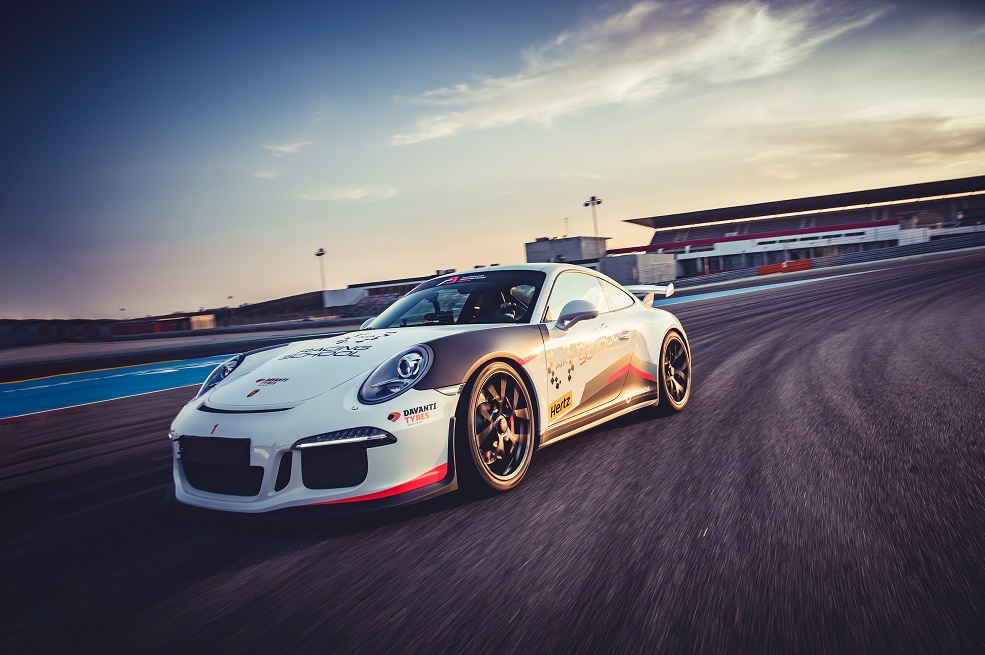
What are run-flat car tyres?
Many modern cars come with run-flat tyres from the factory, and they do exactly as their name suggests, allow the tyre to be driven for a limited amount of time with no air pressure to inflate them. This is great news if you get a puncture, as it means you can drive the car directly to the garage to have the tyre replaced without being left stricken at the roadside. However, run-flats are not very popular among enthusiasts, because they feature extremely stiff and rigid sidewalls. The sidewalls need to be strong enough to support the weight of the car if the tyre is deflated, and as a result they can prove quite uncomfortable to drive on. The reduced flex in the sidewall also hampers performance (remember, it’s the movement of the rubber and the way it interacts with the road that gives us grip) so are often best used on rep-mobiles covering lots of motorway miles, where the convenience of not having to replace the tyre at the roadside outweighs the performance.

